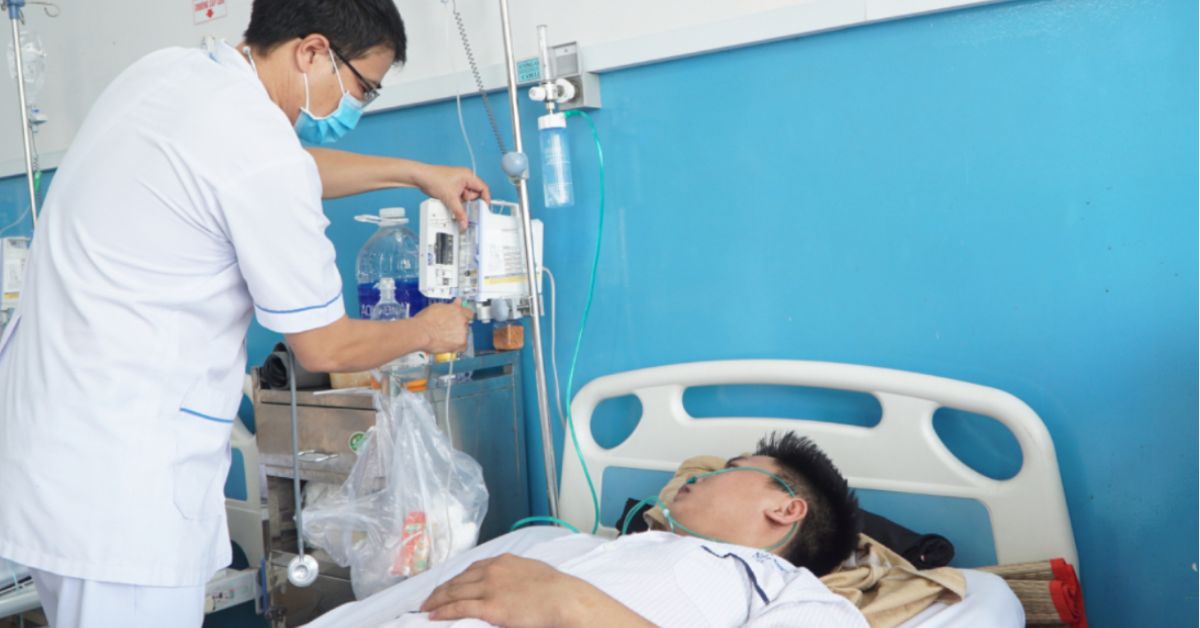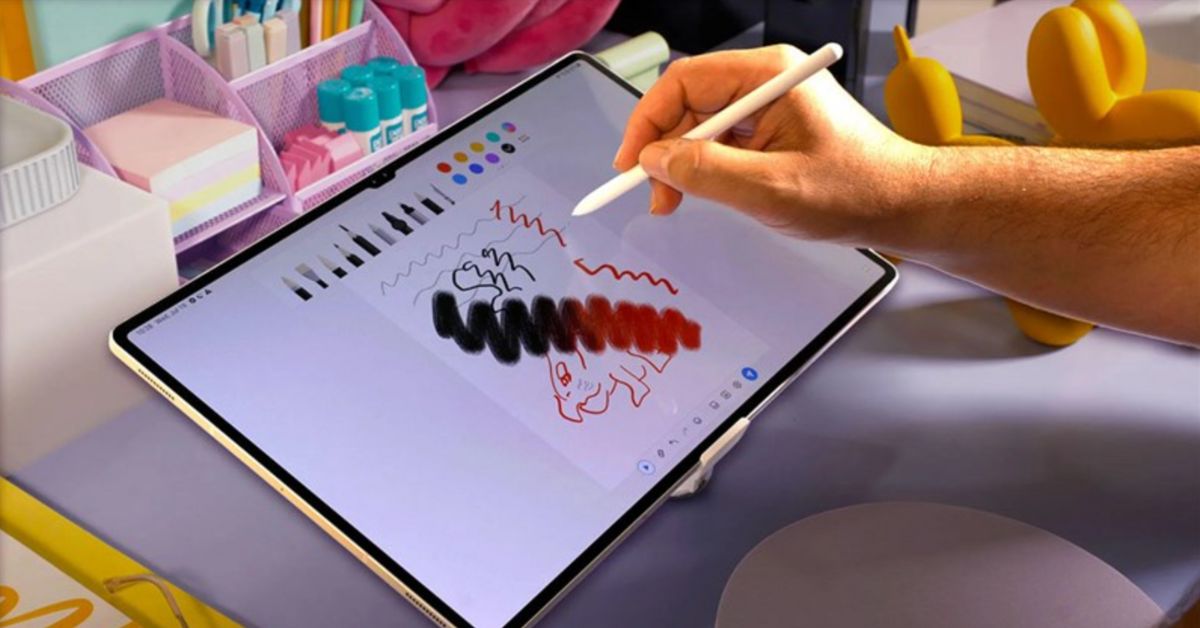Ảnh truyền nước độc đáo tại cánh tay

The human body is a miraculous machine, made up of billions of cells. To function effectively, cells need an adequate supply of water and nutrients. Water accounts for about 70% of the body weight, playing an important role in many physiological processes such as transporting nutrients, regulating body temperature, and eliminating toxic substances. When the body is dehydrated, physiological functions will be affected, leading to many serious consequences. In today's content, we will learn when to inject water, how to inject water, and what effects it has, along with a series of water infusion images to visualize it more clearly.
In what cases is fluid needed?
When the body is dehydrated, physiological functions will be affected, the concentration of toxic substances in the body will increase, affecting health, as well as the risk of kidney stones, constipation, and infections. urinary tract. In particular, acute dehydration will lead to many serious consequences such as fatigue, dizziness, and even exhaustion. So when is water infusion needed, what are the signs, and what does the water infusion image look like?
Dehydration: Due to diarrhea, vomiting, high fever, severe burns, dehydration due to excessive sweating due to vigorous exercise, working in a hot environment, or due to some diseases such as hyperthyroidism,…
Electrolyte disorders: Sodium imbalance due to diarrhea, vomiting or use of diuretics; Potassium, calcium, magnesium imbalance can be caused by certain diseases such as kidney failure or by using certain medications, etc.
Providing nutrition for patients who cannot eat or drink: Due to injury, surgery or some diseases such as cancer, immunodeficiency, malnutrition, some diseases such as burns, severe infections, …
Supporting disease treatment: Infusion can help rehydrate, electrolytes and provide nutrients to the body, help increase circulatory volume and improve blood pressure, eliminate toxins when the body is poisoned,…
 Excessive exercise and excessive sweating can lead to exhaustion and require fluid infusion
Excessive exercise and excessive sweating can lead to exhaustion and require fluid infusion
Common types of water infusion
Fluid infusion is a method of delivering solutions into the body through a vein. Infusion solutions can contain many different substances including water, salt, sugar, drugs and blood. There are three common types of fluid infusion: intravenous fluids, peripheral fluids and central fluids.
Intravenous (IV) fluids
Intravenous (IV) fluids are the most common type of fluid infusion, and the solution is given into a vein in the arm, hand, or neck. Intravenous fluids can help rehydrate and rehydrate people who are dehydrated or have lost electrolytes. This infusion method is also used to provide nutrition to people who cannot eat normally, to deliver medicine to people who need to take medicine quickly or cannot take medicine by mouth. In addition, intravenous fluids are also used to treat some diseases such as shock, infection and poisoning, etc.
 Image of water infusion in female hand
Image of water infusion in female hand
Peripheral perfusion (IVP)
Peripheral perfusion (IVP) is a method of giving prescribed solutions into the body through a vein in the arm or hand. This type of infusion is used to infuse small amounts of solution into the body, usually no more than 1 liter. Peripheral infusions cause fewer complications than other types of infusions and can be done in a clinic, hospital, or even at home.
 Image of peripheral water infusion in the arm
Image of peripheral water infusion in the arm
Central infusion (CVAD)
Central fluid administration (CVAD) is a method of delivering solutions into the body through a large vein in the chest or neck. This type of infusion is used to infuse large amounts of fluid into the body, often more than 1 liter, or to administer medications over long periods of time and needs to be administered by qualified medical personnel.
There are two main types of CVADs: PICC and central venous line (CVC). A PICC port is a small, flexible catheter that is inserted into a vein in the arm and lasts for several months or even years. The CVC line is a larger catheter inserted into a vein in the chest or neck and lasts for several weeks or months.
 Image of central type water infusion
Image of central type water infusion
Some notes about water infusion
Fluid infusion is an effective treatment for many conditions. However, it must be done properly to ensure patient safety. It is necessary to strictly follow the doctor's instructions when administering water, including the type of infusion (solution, dosage, infusion rate), infusion method (infusion route, needle position) and need to be carefully monitored. Patients during fluid infusion to detect early signs of abnormalities such as:
- Condition at the infusion site: swelling, redness, heat, bleeding.
- Signs of infection: fever, chills, rigors.
- Signs of fluid overload: edema, difficulty breathing, increased blood pressure.
- Signs of allergy: rash, itching, difficulty breathing, facial swelling.
 Water transfer imaging is performed by a professional
Water transfer imaging is performed by a professional
Notify your doctor if you have a history of allergies or underlying medical conditions, and notify medical staff if there are any unusual signs during and after the infusion.
Side effects of seawater infusion
Fluid infusion or seawater infusion is a method of delivering physiological saline solution or nutritional solution into the body through the intravenous route. This method, in addition to bringing many benefits such as rehydration, electrolytes, etc., depending on the case, will still have some side effects as follows:
- Reactions at the injection site: Edema, redness, pain at the injection site; blood vessel blockage due to needles; Infection due to poor hygiene when administering fluids; Phlebitis due to prolonged infusion,…
- Electrolyte disorders: Sodium overload can lead to edema, hypertension, heart failure; Potassium deficiency can cause cramps, muscle weakness, and heart rhythm disorders; Calcium and magnesium balance disorders affect nerve and muscle function,…
- Complications due to uncontrolled fluid infusion: Pleural effusion causes difficulty breathing and respiratory failure; Pericardial effusion affects heart function; Cerebral edema can lead to seizures, coma, death, etc.
- Allergic reactions: Hives, rash, itching; facial swelling, laryngeal edema; life-threatening anaphylactic shock,…
 Seawater infusion imaging is performed by a specialist doctor
Seawater infusion imaging is performed by a specialist doctor
The risk of side effects during and after infusion will be higher in people with underlying medical conditions such as heart failure, kidney failure, and high blood pressure. Therefore, infusion should be performed by qualified medical staff and as prescribed by a doctor.
Collection of unique images of water infusion in the arm
Nowadays, pretending to be sick to take time off from work or school is no longer a strange thing. To increase the convincingness of his lie, pictures of hand infusions were downloaded as evidence.
 Image of a nurse preparing to administer seawater to a patient
Image of a nurse preparing to administer seawater to a patient  Image of a patient waiting for an infusion
Image of a patient waiting for an infusion Image of preparation to insert water infusion tube
Image of preparation to insert water infusion tube Image of an optimistic patient receiving fluids
Image of an optimistic patient receiving fluids Image of a patient waiting for a resuscitation infusion, with relatives watching over him
Image of a patient waiting for a resuscitation infusion, with relatives watching over him Image of a patient sitting and monitoring fluid infusion
Image of a patient sitting and monitoring fluid infusion Image of water infusion in female hand
Image of water infusion in female hand Image of a doctor inserting a fluid tube into a patient's hand
Image of a doctor inserting a fluid tube into a patient's hand Image of an infusion of a female patient
Image of an infusion of a female patient Image of infusion at home at night
Image of infusion at home at night Images of fluid resuscitation for patients who have just had surgery
Images of fluid resuscitation for patients who have just had surgery Image of the patient resting and receiving fluids
Image of the patient resting and receiving fluids Image of a patient checking in for an intravenous drip at the hospital
Image of a patient checking in for an intravenous drip at the hospital Image of water transfusion in the cold season
Image of water transfusion in the cold season Image of infusion due to excessive labor leading to exhaustion
Image of infusion due to excessive labor leading to exhaustion Image of water infusion on a female arm
Image of water infusion on a female arm Image of the water infusion vein
Image of the water infusion vein Image of the price of hooking up infusion bags for water and infusion solutions
Image of the price of hooking up infusion bags for water and infusion solutions Image of patient lying waiting for fluid infusion
Image of patient lying waiting for fluid infusion Image of a female patient receiving fluid infusion
Image of a female patient receiving fluid infusion Image of a patient lying down receiving fluids
Image of a patient lying down receiving fluids Image of a doctor monitoring a patient's fluid infusion process
Image of a doctor monitoring a patient's fluid infusion process Close-up image of infusion
Close-up image of infusion
Some questions related to the image of hand irrigation
Fluid infusion is a common treatment method, helping to restore water, electrolytes, provide nutrition and support disease treatment. Water infusions can be performed in many locations on the body, but most commonly in the hands. In the following content we will answer frequently asked questions about hand hydration. In addition, the article will also provide some useful information on how to care after hand infusion, helping you ensure your health and avoid complications.
What are the advantages of hand fluid infusion?
Hand hydration is a simple technique. The veins in the hand are easy to see and touch, making needle insertion easier, so can be performed by qualified medical staff. Besides, compared to other locations such as the neck, chest, groin, water infusion in the hand often causes less pain.
After water infusion, monitoring vital signs such as pulse and blood pressure is easier to do when water is given to the hand. However, it should be noted that hand water infusion also has some disadvantages such as it can cause some minor complications such as bruising, swelling, and discomfort for the patient when moving their arms.
 Image of water infusion in female hand
Image of water infusion in female hand
Does water infusion make you fat?
Water infusion does not directly cause weight gain or obesity, because water infusion solutions usually contain water, mineral salts, vitamins and some nutrients necessary for the body, so the amount of calories in water infusion solutions is often low and not enough. to cause weight gain. Besides, weight gain depends on many factors such as diet, physical activity, metabolism, etc.
 Image of a female patient receiving water
Image of a female patient receiving water
However, in some cases, water infusion can lead to weight gain indirectly, for example, too much water infusion can lead to water accumulation in the body, causing edema. Or some types of water infusion solutions may contain sugar or glucose. If given too much, it can lead to increased calories and the risk of weight gain. In addition, there are some cases where water infusion can help improve health status, help patients eat better, leading to weight gain.
How long does it take for the infusion to absorb?
Normally, water infusion time ranges from 30 minutes to 2 hours and to determine more accurately, it depends on many other factors, mainly based on the following conditions:
Type of infusion solution: There are many different types of infusion solution, each with a different infusion time. For example, a 5% glucose infusion solution is usually infused over 30 minutes, and Ringer's lactate infusion solution is usually infused over 1 hour.
Volume of infusion solution: The larger the volume of infusion solution, the longer the infusion time.
Infusion rate: The solution infusion rate is adjusted by the doctor or medical staff. A fast infusion speed will help shorten the infusion time, but may cause some side effects such as nausea, vomiting, and dizziness.
Patient's health status: Patients with weak health and poor cardiovascular health may need a longer infusion time.
 Image of water transfusion in hospital
Image of water transfusion in hospital
Conclusion
Water infusion is an effective treatment for many diseases, however, it needs to be done properly by a professional and with a doctor's prescription to ensure safety. And besides the questions mentioned above, you can also share water infusion images for you to visualize better. We will try to answer your questions as quickly as possible. Hopefully the above summary article by Hoang Ha Mobile has provided you with enough useful information about water transmission.
SEE MORE:
- 100+ beautiful, unique, strange white avatar images that are extremely hot
- 99+ The most beautiful images of November 20 celebrating Vietnamese Teachers' Day





